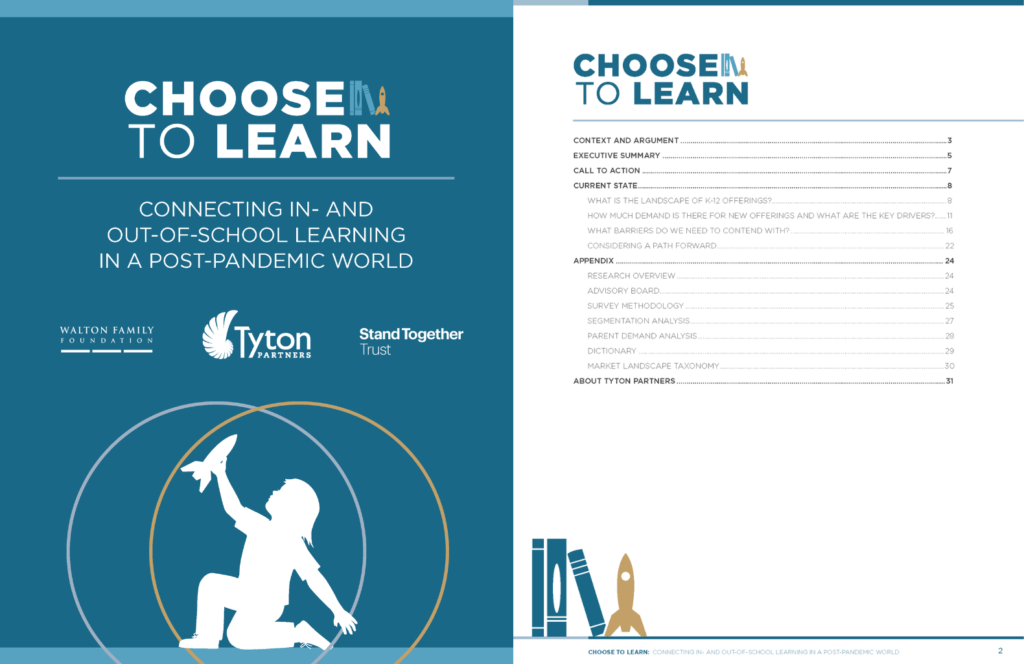Listening to Learners 2025
September 16, 2025 BlogListening to Learners 2025 Listening to Learners 2025 examines how student perspectives connect with institutional practices. The report…
Across K-12, families have theoretically always had choices: namely, where their child goes to school and how they spend their time outside of school. But these choices present too many compromises. Families value school—it can be cost-effective, convenient, credible—but they rarely depend on it to deliver the full-range of learning outcomes—and joy—they aspire towards. Out-of-school learning can likewise be inadequate: children engage in programs to pursue their passions, but they rarely get “credit” for these experiences, especially as it relates to college and/or career pathway efforts. For a child to flourish, it can require an exhaustive amount of time and resources.
These choices are also not distributed equitably: children from historically underserved backgrounds have far more limited K-12 experiences to choose from—and, in turn, a more limited range of outcomes. For every one family that has the time and resources to select the ideal school setting for their child, curate music lessons and robotics courses, and send their child to sleepaway camp—to choose their own K-12 adventure—there are many who rely entirely on a local school, which has limited capacity, to deliver the same collection of experiences and outcomes. Parents have common aspirations—they want their child to flourish—but the ability for all families to achieve this in our current K-12 system is not yet realized.
How can our K-12 education system deliver a more credible union between academic growth, extracurricular passion, and personal fulfillment? How can we work to connect families more seamlessly to in- and out-of-school opportunities consistent with their values and needs and regardless of their life or economic circumstances?
Download our report, Choose to Learn 2022, that looks at data collected from more than 3,000 K-12 parents and more than 150 K-12 suppliers across all 50 states in the United States, to address these crucial and timely questions. If you have any questions or would like to continue the conversation with us, reach out to us at info@tytonpartners.com.
